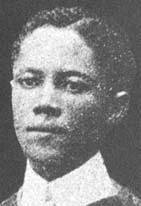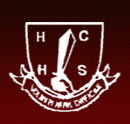Related Research Articles

Cape Coloureds are a South African ethnic group consisted primarily of persons of mixed race and Khoisan descent. Although Coloureds form a minority group within South Africa, they are the predominant population group in the Western Cape.

Coloureds refers to members of multiracial ethnic communities in Southern Africa who may have ancestry from more than one of the various populations inhabiting the region, including African, Asian, as well as European. South Africa's Coloured people are regarded as having some of the most diverse genetic background. Because of the vast combination of genetics, different families and individuals within a family may have a variety of different physical features.

Dulcie Evonne September was a South African anti-apartheid political activist. Born in Athlone, Western Cape, South Africa, she was assassinated in Paris, France.

District Six is a former inner-city residential area in Cape Town, South Africa. Over 60,000 of its inhabitants were forcibly removed during the 1970s by the apartheid regime.

Apartheid was a system of institutionalised racial oppression that existed in South Africa and South West Africa from 1948 until the early 1990s. This system denied non-white South Africans basic human rights, such as the right to vote. Apartheid was characterized by an authoritarian political culture based on baasskap, which ensured that South Africa was dominated politically, socially, and economically by the nation's minority white population. According to this system of social stratification, white citizens had the highest status, followed by Indians and Coloureds, then black Africans. The economic legacy and social effects of apartheid continue to the present day.
Bennie Khoapa was a social worker in South Africa during the 1960s and 1970s involved in the resistance to apartheid. He worked for YMCA, and was supportive of the young activists of the time, especially the young Steve Biko. Ultimately Biko and Khoapa founded the Black Consciousness Movement (BCM). In the movement, Khoapa was able to use his experience and connections to garner the support of various Christian organizations, and lend the BCM crucial credibility in its formative months. Khoapa was among those banned by the South African government due to their actions in the anti-apartheid movement.
The system of racial segregation and oppression in South Africa known as apartheid was implemented and enforced by many acts and other laws. This legislation served to institutionalize racial discrimination and the dominance by white people over people of other races. While the bulk of this legislation was enacted after the election of the National Party government in 1948, it was preceded by discriminatory legislation enacted under earlier British and Afrikaner governments. Apartheid is distinguished from segregation in other countries by the systematic way in which it was formalized in law.

Alexander Sinton Secondary School, also known as Alexander Sinton High School, is an English-medium school in Athlone, a suburb of Cape Town, South Africa. The school is located in the Cape Flats, an area designated as non-white under the Group Areas Act during apartheid. The school was involved in the anti-apartheid student uprisings of the 1970s and 1980s. Staff and students at the school made headlines when they barricaded the police into their school in September 1985. The following month, three youths were killed near the school by police officers who opened fire on protesters in the Trojan Horse Incident. It was the first school to be visited by Nelson Mandela after his release from prison. As of 2014, the school has 1,100 pupils, half boys and half girls. The school employs 40 teachers and six non-teaching staff.

Internal resistance to apartheid in South Africa originated from several independent sectors of South African society and took forms ranging from social movements and passive resistance to guerrilla warfare. Mass action against the ruling National Party (NP) government, coupled with South Africa's growing international isolation and economic sanctions, were instrumental in leading to negotiations to end apartheid, which began formally in 1990 and ended with South Africa's first multiracial elections under a universal franchise in 1994.
The African Political Organization, later known as the African People's Organization (APO), was a coloured political organisation in early-20th-century South Africa. Founded in Cape Town in 1902, the organisation rallied South African coloureds against the South Africa Act 1909.

Neville Edward Alexander was a proponent of a multilingual South Africa and a former revolutionary who spent ten years on Robben Island as a fellow-prisoner of Nelson Mandela.
The concept of the Northern Cape as a distinct geo-political region of South Africa coalesced in the 1940s when a "Northern Cape and Adjoining Areas Regional Development Association" was formed and the first map featuring the name "Northern Cape" was published. The geographic spread to which the term applied was not fixed until 1994, however, when it attained precise definition as the Northern Cape Province, one of South Africa's nine post-apartheid provinces. Since then there have been boundary adjustments to include parts of the former Bophuthatswana adjacent to Kuruman and Hartswater. Vryburg and Mafikeng, in the north eastern extremity of the former Cape Province - and hence regarded as part of the pre-1994 "Northern Cape" - are excluded, being part, now, of the North West Province in the North.
Zainunnisa "Cissie" Gool was an anti-apartheid political and civil rights leader in South Africa. She was the daughter of prominent physician and politician Abdullah Abdurahman and mother Helen Potter James. Gool founded the National Liberation League and helped to create the Non-European United Front (NEUF). She was known and loved as the "Jewel of District Six" and "Joan of Arc" by South Africans as a champion of the poor.
The Non-European Unity Movement (NEUM) is a Trotskyist organisation formed in South Africa in 1943. It had links to the Workers Party of South Africa (WPSA), the first countrywide Trotskyist organisation, and was initially conceived as a broad protest front. It proposed a 10 Point Programme of radical reforms. It stressed non-racialism, meaning that it rejected race-based organising, unlike the main nationalist groups of the time, was highly critical of the South African Communist Party and the African National Congress, and made a principle of non-collaboration with the apartheid regime and its allies

Trafalgar High School is a public English medium co-educational secondary school in District Six of Cape Town in South Africa. It was the first school built in Cape Town for coloured and black students. The school took a leading role in protesting against apartheid policies. It celebrated its centenary in 2012 and is still running.

Harold Cressy was a South African headteacher and activist. He was the first Coloured person to gain a degree in South Africa and he worked to improve education for non-white South Africans. He co-founded a teachers group which opposed the apartheid Bantu Education Act.

Harold Cressy High School is a secondary school in District Six of Cape Town in South Africa. It was founded in January 1951 as the Cape Town Secondary School. The school has played a substantial role in South African history during the apartheid period and the building is identified as an important landmark.
Mohamed Adhikari is a professor of history and author of several books on both Coloured identity and politics in South Africa as well as on settler colonialism and genocide. He is a professor at the University of Cape Town. He was born in Cape Town in 1953, matriculated from Harold Cressy High School in 1971, and obtained a bachelor's degree at the University of Cape Town in 1980.
Dorothy Adams Williams was a South African educator who fought against apartheid. Adams was subject to a banning order and eventually left South Africa in exile; she worked with Albie Sachs in London. After her return to South Africa with her husband, Frank Williams, they were the first mixed-race couple on their street.
References
- ↑ Adhikari 1994, p. 101.
- ↑ Wieder 2008, p. 13.
- 1 2 "UCT Names Residence After First Coloured student to Obtain a University Degree in South Africa". OkayAfrica. 2017-10-04. Retrieved 2020-01-04.
- ↑ Adhikari 1994, p. 115.
- ↑ Adhikari, Mohamed (1997). "Voice of the Coloured Elite: APO, 1909-1923". In Switzer, Les (ed.). South Africa's Alternative Press: Voices of Protest and Resistance, 1880-1960. Cambridge: Cambridge University Press. p. 138. ISBN 978-0-521-55351-3.
- 1 2 Adhikari 1994, p. 125.
- 1 2 3 4 5 6 "Teachers League of South Africa (TLSA) conference in 1925". South African History Online. Retrieved 2020-01-04.
- 1 2 Wieder 2008, p. 60.
- ↑ Chisholm, Linda (2019). Teacher Preparation in South Africa: History, Policy and Future Directions. Bingley: Emerald Publishing Limited. p. 64. ISBN 978-1-78743-694-7.
- ↑ Fraser-Moleketi, Geraldine (3 August 2018). "The essential key to SA's liberation". The Mail & Guardian Online. Retrieved 2020-01-04.
- ↑ Wieder 2008, p. 61.
- ↑ "Bans S. Africa Leaders On Bogus 'Red' Charges". The Pittsburgh Courier. 1960-01-09. p. 6. Retrieved 2020-01-04– via Newspapers.com.
- ↑ "Dulcie Evonne September". South African History Online. Retrieved 2020-01-04.
- ↑ "Dorothy Adams". South African History Online. Retrieved 2020-01-03.
Sources
- Adhikari, Mohamed (1994). "Coloured Identity and the Politics of Coloured Education: The Origin of the Teachers' League of South Africa". The International Journal of African Historical Studies. 27 (1): 101–126. doi:10.2307/220972. ISSN 0361-7882. JSTOR 220972.
- Wieder, Alan (2008). Teacher and Comrade: Richard Dudley and the Fight for Democracy in South Africa. Albany, New York: State University of New York Press. ISBN 978-0-7914-7845-5.